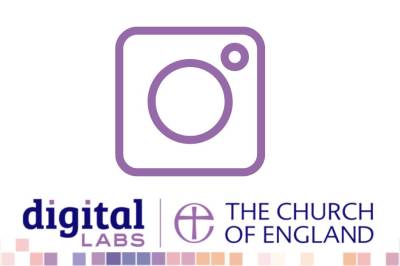06/10/2021
In recent years we’ve seen a democratisation of photography: everyone now has a digital camera in their pocket in the form of a smartphone. There’s been an explosion of content and there has never been a time where photography has been so accessible. But despite ever increasing advances, in smartphone technology, all smartphones still have a crucial shortcoming: their imaging sensor is tiny, as are their lenses – and a small sensor and a small lens means a decreased sensitivity to light. And that can mean blurry or grainy images. But the good news is, with a few tips and tricks you can still take a great photo even in a dark church or prayer room.
Challenges of low light photography and what to do about it
Reduce ‘noise’
You may have noticed that in less than ideal lighting conditions your images are fuzzy, grainy, with a shift in colour and poor focus – also called ‘noise’. These are the results of the software in your phone trying to artificially boost images that are too dark by adding gain to the digital signal - this is called the ISO.
ISO – In photography this refers to the sensitivity—the signal gain—of the camera's sensor. In low-light your camera will add more gain to artificially boost the photograph - the higher the ISO, the brighter the image but the more noise is introduced.
The problem is the software will often times do this automatically across the whole image, with little thought to how you would like it to appear. Photography is at its most dramatic with contrasts between areas of black and light, but your phone will usually try to compensate for any dark area by boosting it to match the brighter areas.
The primary way to control noise is by making sure you focus onto the brightest area you want to expose to. So for example, if taking a portrait, place your subject in the brightest lit area and in your camera app, tap the screen to focus onto the part of the face which is most brightly lit. If on the other hand the square reticle controlling focus and exposure was left on a dark area of the scene, this would lead to your phone exposing to that and raising the ISO.
Tip: Use an app for greater control - Hydra has a low light setting, and apps such as Lightroom CC mobile or Camera+2 will allow you to adjust the ISO setting directly as well as the shutter speed.
Reduce blur
When taking low light photos you will often notice it is difficult to keep things in focus and any motion will make your images blurry. This is down to the shutter speed.
Shutter speed is the length of time that the light hits the camera’s sensor during the exposure. In low light conditions the camera has to use a slower shutter speed to allow more light in to create a well exposed shot.
The problem with slow shutter speeds is that if the camera moves while taking the shot, the image will be blurred due to camera shake. Using a tripod, a stack of books, or leaning on a firm surface will all help.
Find the light
When taking your photo you should take a moment to really study your location. What is the primary source of light? If you can move either your subject or the brightest light source, to be as close to each other as possible, you will get the best results.
Tip: When taking photos during a church service, you may not be able to move the subject, but you may be able to position yourself closer, or adjust the lighting beforehand, to get the best light.
Of course, the brightest source of light we have access to is the sun, and its often light coming through windows that can be the most flattering, particularly if it’s a little cloudy outside as this provides a large source of soft lighting. When using artificial light, you can get similar results by using a large soft box to diffuse the light and placing the light close to the subject. Less diffused lighting, such as a bright sunny day, or a light without a soft box, will create a stronger contrast between bright and dark areas, and stronger shadows. This can be great for high contrast silhouettes but is not generally very flattering.
Edit your images
Finally, in terms of processing your images, we recommend using Snapseed. It's a free and powerful, with many different tools. Like all powerful tools, it's best used in subtle ways, but for low light photography, the most important feature are the tune image options allowing you to control brightness, contrast, ambience, highlights and shadows. These settings will allow you to control the contrast between areas of your image you want to be brightest and the darker areas.
Tip: Making the shadows deeper will reduce digital noise introduced by the high ISO setting while brightening the highlights will make these areas pop.
Aside from tune image, other tools to try out are Drama, HDR scape and tonal contrast. These are all great options for a more dynamic image, but be careful not to overuse these as they will add a lot of noise when pushed too far or make your image look unnatural.
Chris Rowe
Lead content producer
Keep up to date with all things digital and join our Digital Labs newsletter



